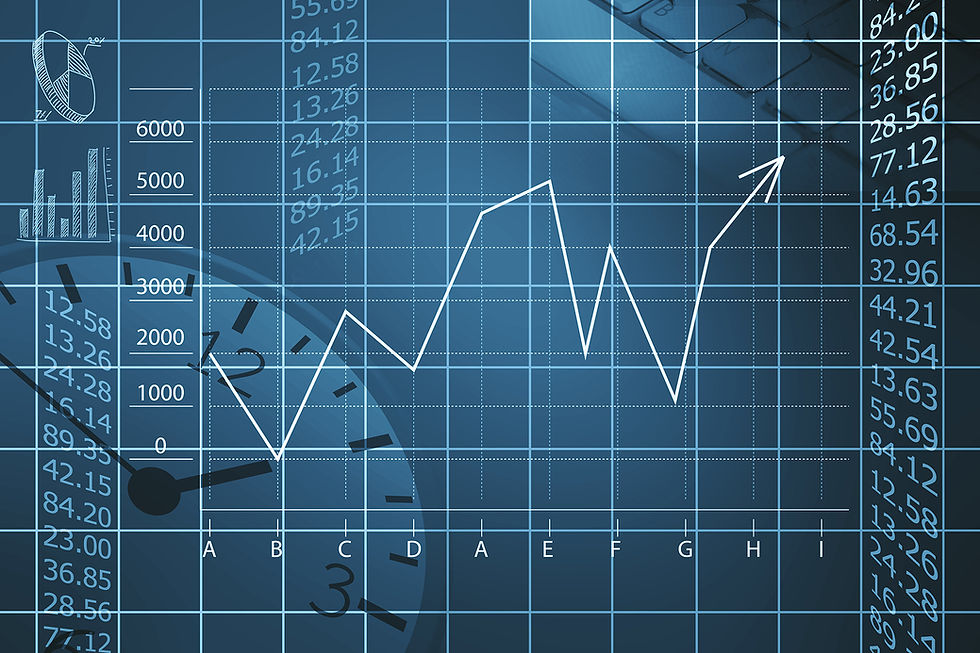Dividend Stocks
- Yashas Pradeep
- Aug 7, 2021
- 4 min read
AT&T’s announcement of a deal to sell some of its assets to Discovery this week didn’t go over well with its shareholders, who learned in the news brief that the telecom company was slashing its dividend. Suddenly, investors who’d gotten used to a hefty 7% dividend from a stock that was lackluster at best are going to see about half that amount.
So what exactly are dividends? How can you tell what dividend yield a company or mutual fund is paying—and more importantly, how do you know if it’s competitive or if you can do better elsewhere?

How Do Dividends Work?
Dividends give shareholders cash payouts on a quarterly basis. As long as you own shares of that company or fund, you’ll get the payout automatically. Dividend yields are set, but they can change, as seen in the AT&T example.
Different Types of Dividends
The most common type of dividend is a cash dividend. “[It means] you’re actually being paid in cash,” says Nick Juhle, the Vice President and Director of Investment Research for the wealth-management firm Greenleaf Trust.
Cash dividends come in two types: ordinary, which are taxed at your income tax rate, and qualified, which are taxed as capital gains.
Other types of dividends, which are much rarer, include:
Stock dividend – Rather than a cash payment, a stock dividend pays in shares of stock.
Asset dividend – Instead of paying cash, an asset dividend could pay an asset like property.
Special dividend – A special dividend is an occasional, one-time cash payout that a company may give its shareholders.
How Often Are Dividends Paid Out?
Dividend stocks are usually paid quarterly, coinciding with the cash earning cycle. Special dividends, which are “one-time events,” can be paid out at any time.
Dividend Stocks vs. Dividend Yield
A dividend stock is any stock that pays a dividend. Dividends are expressed as rates in terms of the dollar amount you will receive in the year.
Dividend yields express the dividend rate as a percentage of the stock price. If a stock that’s trading for $100/share pays a $1 dividend, the dividend rate is $1 and its yield is 1 percent.
Higher yields aren’t always better. Tom O’Gorman, an investment advisor with AP Wealth Management in Augusta, GA, gives an example of a penny stock trading at $0.05 with a dividend of $0.01. “That’d be a 20 percent yield. It’s fantastic from a yield perspective, but you’re still only getting a penny,” he says.
How To Find High Dividend Stocks or Funds
Currently the dividend yield on the S&P 500 is 1.4 percent, which encompasses many companies that are paying above-average dividends and many that pay no dividends.
“In this current environment, a healthy company is probably going to be paying something between 1 and 3 percent [of a dividend] and that’s sustainable,” says Juhle.
Understanding what a good dividend yield is in the current environment, you can look for dividend stocks that meet your criteria for investing. Boateng notes that stock listings will show you the dividend and the yield. If those fields are blank or say N/A, the stock doesn’t offer a dividend.
Investors looking to buy a cash dividend stock will be able to choose between two classes of dividend stock, common and preferred. While you might hear the term preferred and assume it’s a better deal, that’s not always the case.
Preferred stock usually offers higher dividends, but has a fixed redemption price. There’s also a call option, where the company can make you sell them back your shares after a set period of time, usually five years. O’Gorman cautions against buying a preferred stock with a high dividend rate (say, 7 to 8 percent) if it is going to be callable soon, as there is a “very high chance the stock is going to be redeemed” and you won’t own it anymore.
Common stock tends to have a lower dividend. These shareholders are last in line to receive their dividend, so shareholders may not receive their promised dividend if earnings fall. Share prices will likely be more volatile than for preferred stock, but the redemption price does not have that built-in ceiling. Plus, you’ll never have your shares called.
Before investing in dividend stocks, whether common or preferred, consider this warning from O’Gorman: they’re not without risk. In the short term, you can come out ahead. But in the long term, says O’Gorman, betting on individual stocks increases risk in your portfolio, because the value of stocks can go down over time.
On the other hand, many financial experts recommend index funds, which are mutual funds that consist of a large number of stocks, giving you instant diversification and minimal fees. Many index funds also pay dividends.
Conclusion
While you can buy dividend stocks at any age, O’Gorman does not think they make a lot of sense for a younger investor who is looking for growth. “Dividend stocks have traditionally been for more senior investors, who are looking toward income in retirement years and frankly sometimes people live off dividends in retirement years,” says O’Gorman.
The main appeal of dividend stocks is their predictability, since you will get a quarterly cash payment until you sell your shares.



Comments